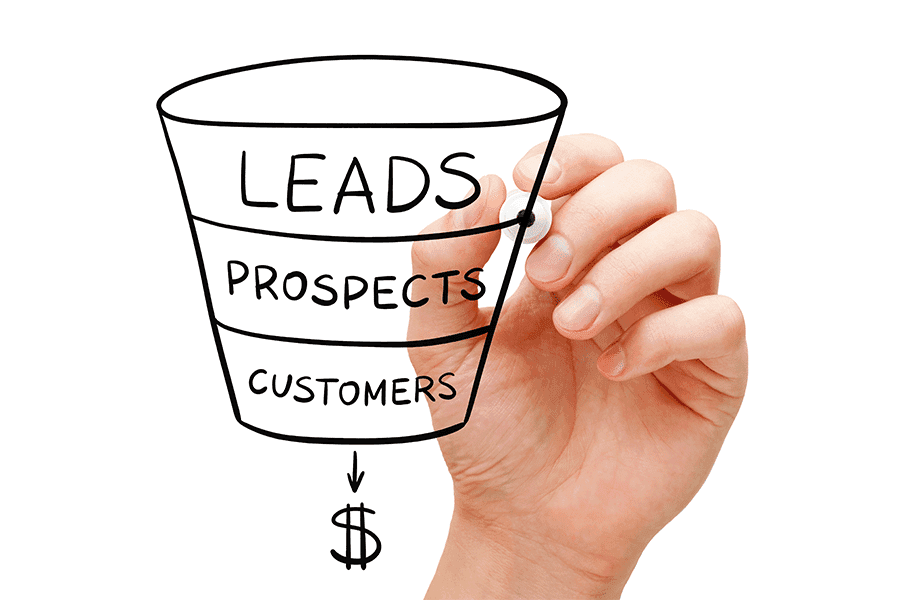Ground-Breaking Ecommerce Marketing Strategies to Sell More
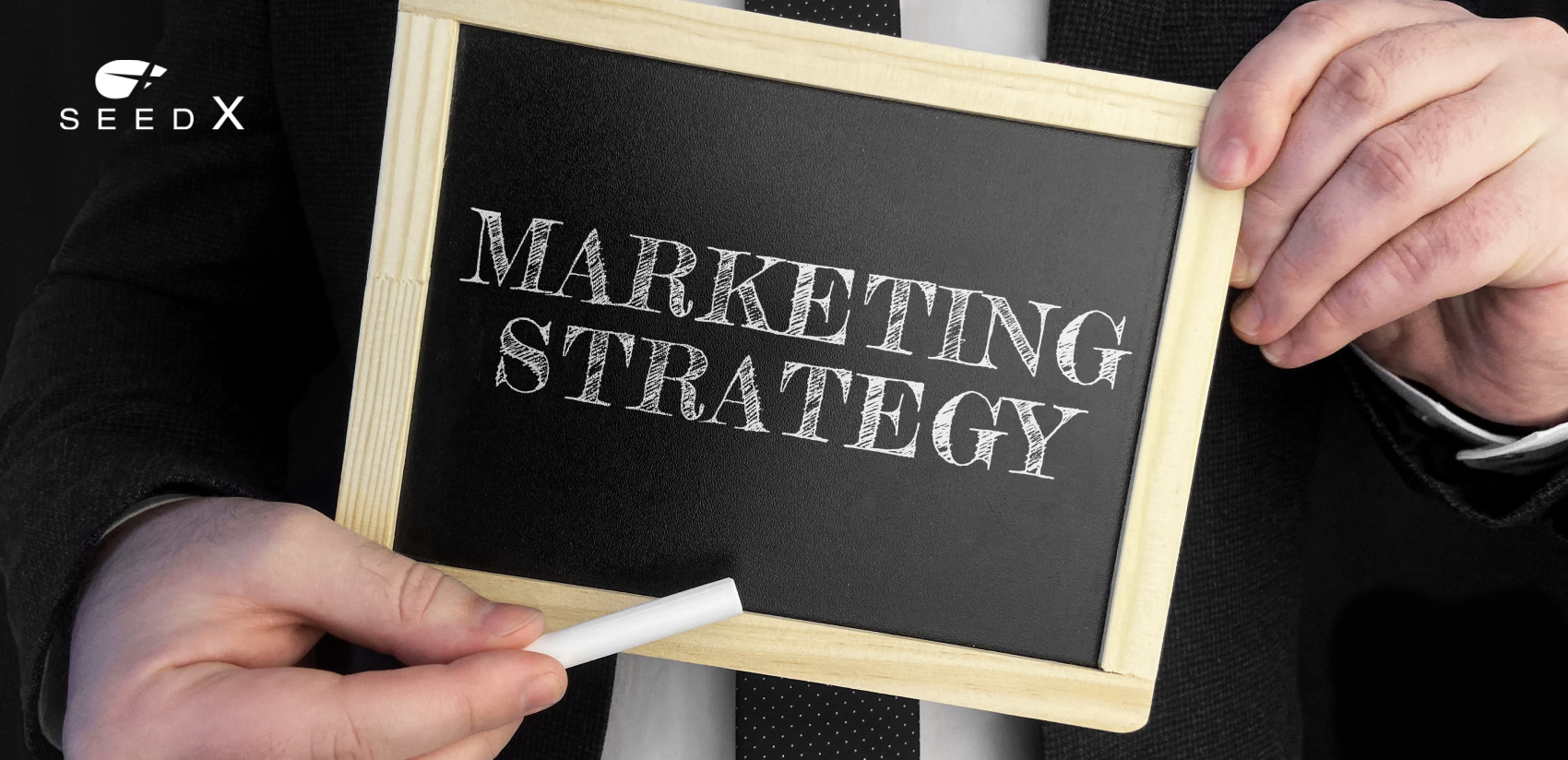
An ecommerce marketing strategy is equivalent to the engine in your car. It is the driving force that propels online businesses forward. Just as an engine powers a car to move efficiently and reach its destination, a well-thought-out e-commerce marketing strategy will empower your online store to achieve its goals and objectives effectively.
The ecommerce space is highly competitive and quite saturated. To win, you need a strong ecommerce strategy that has been tested and proven over time. Beyond that, you need to personalize it to your business to get the maximum advantage.
Here, we’ll break down the 12 most prominent ecommerce strategies with examples and show you why they are important and how they can help you achieve your goals.
What to Expect:
12 Ecommerce Strategies for Your Business
2. Use influencer marketing campaigns
3. Promote your brand on TikTok
5. Create upselling strategies
8. Consider a content marketing strategy
10. Optimize for mobile visitors
11. Personalize your customer experiences
12. Create customer referral programs
What is Ecommerce Marketing?

Ecommerce marketing is the act of using digital marketing tactics to drive traffic to your online business, convert new website visitors into customers, and retain existing customers after purchase.
Ecommerce marketing can be broken down into 3 critical stages:
• Customer acquisition
• Conversion
• Customer retention
All of these stages are crucial for the success of any online store, and before delving into the strategies, you need to identify the stage your business is in so that you can focus on the right strategies.
Suppose you are in the early stages of business. In that case, you probably need a more robust customer acquisition strategy, not a customer retention strategy, and vice versa if your business is more established.
12 Ecommerce Strategies for Your Business

Here’s a quick tip to help you pick the right strategy easily. If you want to get more customers through the door, focus on acquisition strategies. If you have a lot of website visitors, but they aren’t converting into customers, focus on conversion strategies.
Last but not least, if you already have customers who are converting well but want to increase sales and reduce churn, focus on retention strategies. Let’s get into it!
1. Work on your SEO
Business stage: Customer acquisition and conversion
Search engine optimization (SEO) refers to a series of improvements or optimizations you make to a website in order to increase its visibility on search engines. The more visible your website is for relevant keywords, the more traffic and conversions you’ll get.
The right position on a search engine like Google makes all the difference. According to Backlinko, the #1 organic result is 10 times more likely to receive a click than a page in spot #10.
Here are three things you can start doing today to improve your SEO:
• Perform keyword research and include keywords in your page URLs, product descriptions, and blog posts.
• Optimize your website structure and create a good user experience.
• Build backlinks from other reputable websites.
Learn more about how to optimize on-page SEO using the best SEO optimization tools.
2. Use influencer marketing campaigns
Business stage: Customer acquisition
Influencer marketing is a reliable strategy that works for ecommerce businesses because of its efficiency in tapping into new and highly relevant audiences. A study by Mediakix shows that 80% of marketers find influencer marketing effective.
If you are considering influencer marketing campaigns, choose influencers who are relevant to your industry and audience. Also, go for influencers who are enthusiastic about your product. When an influencer shows genuine excitement for your product, it is easier for their audience to fall in love with it.
Pro Tip: When you think ‘influence,’ don’t think “Who has the most amount of followers?” instead, think about “Who has the most engaged and qualified audience for my product?” and then go from there.
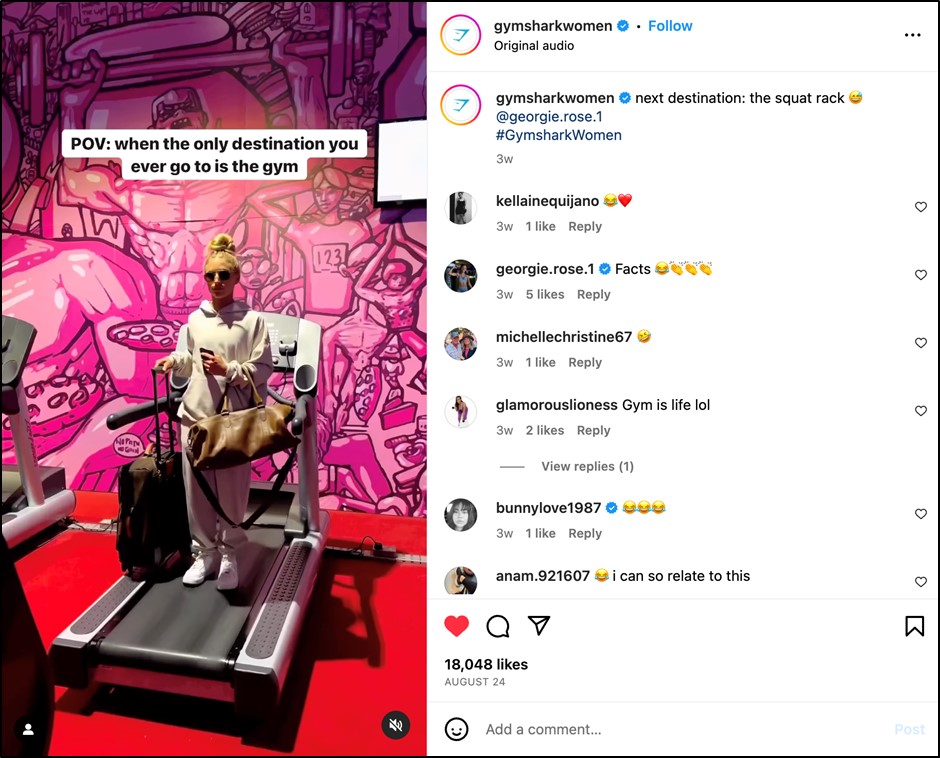
3. Promote your brand on TikTok
Bussiness stage: Customer acquisition and conversion
Most ecommerce stores tend to perform well on TikTok because ecom products are highly demonstrable. For example, Blendjet. They have 220,000 followers on TikTok and all of their content is based on demonstrating how their product works.
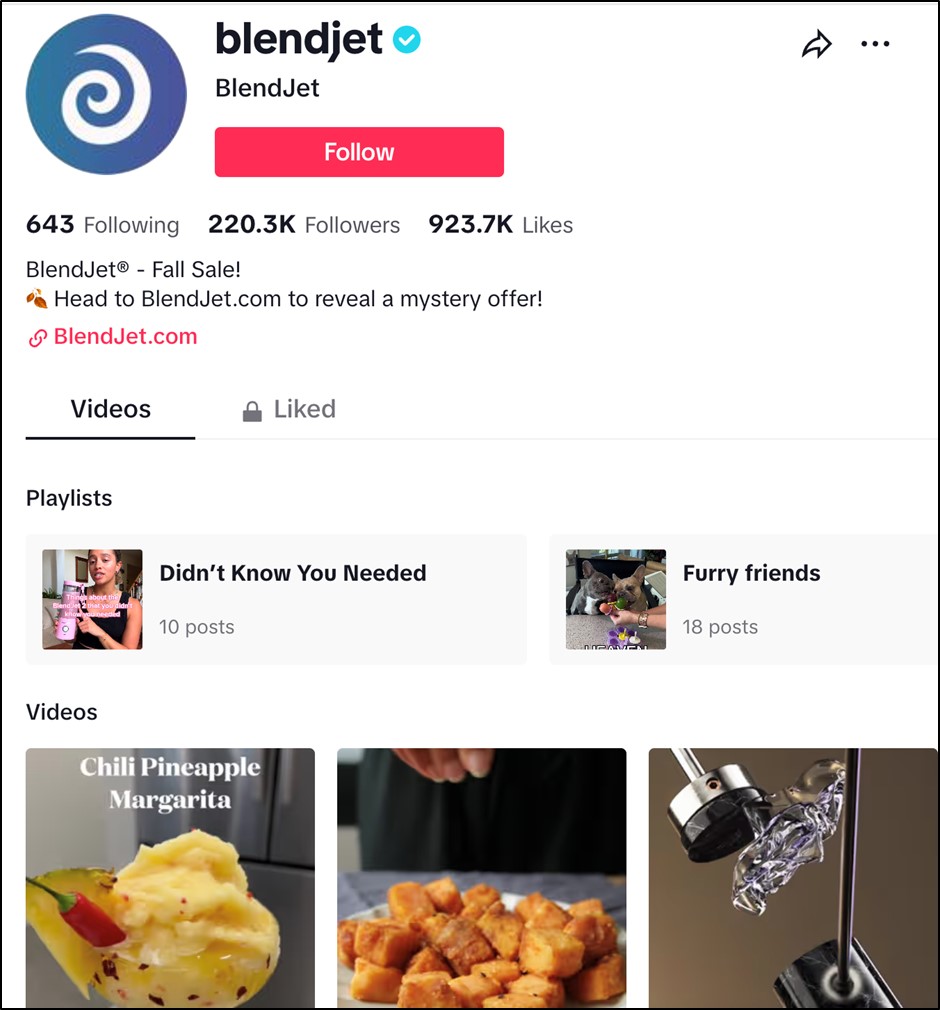
With over one billion monthly active users and more than 173 million first-time installs across app stores in one quarter alone, TikTok is a very powerful social media marketing platform.
The best thing about TikTok is that you don’t need over-the-top, highly edited videos to get traction on the platform. The TikTok audience is more interested in raw and authentic content and experiences they can see themselves in. That’s what makes TikTok unique when it comes to building relationships with your audience.
TikTok benefits:
• TikTok’s algorithm prioritizes content from creators you’ve never seen before.
• TikTok’s UI is designed to keep people in the app longer than Instagram or Facebook.
• TikTok’s discovery engine helps videos go viral, no matter your follower count.
According to research from Adweek, TikTok is an ROI-positive platform, with over half (51%) of TikTokers making purchases from brands they see in the app. And with the recent introduction of TikTok Shop, we might see it becoming an integral part of online shopping experiences.
Learn proven and tested TikTok tips that will help your brand go viral!
4. Use PPC Campaigns
Business stage: Customer acquisition and conversion
Pay-per-click (PPC) advertising is a primary online advertising model for all online businesses, whether large or small.
PPC ads are meant for ready-to-buy shoppers searching for a product or website online. For instance, if you Google “men gym shorts,” the first three results on the search result page are PPC ads from different online stores for the keyword “men gym shorts.”
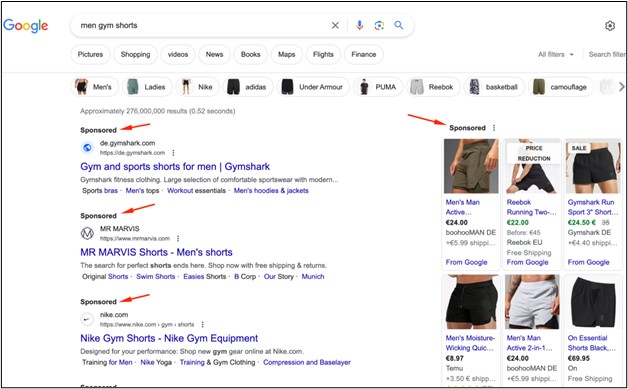
Learn how to create great Google Ads with our step-by-step guide.
PPC ads are often used in search engines like Google, social media platforms like Facebook, and some websites like Amazon. However, the most popular platforms are Facebook and Google because they have a higher return on ad spend (ROAS) and better audience targeting algorithms.
PPC ads are very appealing because of the ability to target specific customer segments within the market. You can choose exactly who you want to advertise to based on their demographics, location, and other interests.
Due to advanced data tracking and integration within platforms, you can also retarget people who’ve viewed specific landing pages on your website or specific previous ads and encourage them to buy your product.

5. Create upselling strategies
Business stage: Customer retention
Many people think that marketing ends when the sale happens. However, marketing never ends, and the sale is only the beginning.
The easiest way to scale your business is to focus on your existing customers. Retaining a customer is easier and more rewarding than acquiring a new customer who has never heard of your brand.
That’s why we encourage ecommerce businesses to use upselling to engage existing customers and make easy sales.
There are only two things you need to remember when upselling:
• Ensure your upsell products are related to the product your customer bought. For example, you can upsell them watch accessories or a cleaning kit if they buy a watch.
What you don’t want, though, is to upsell a wallet to a watch customer. Those two products aren’t related in any way.
• Take your customer’s expected price range into account. Customers always consider an upsell based on the price of the original product.
Therefore, the price of your upsell should be lower than the original product for a low-barrier, no-objection sale. If it is higher than the original product, the upsell must be way better in discernable quality for it to make sense to your customer.
Apple is a master in upselling. Here is an example taken directly from their website.

6. Invest in SMS marketing
Business stage: Conversion and customer retention
SMS marketing is pretty new as a mainstream marketing channel. It refers to the use of messages to inform customers about special promotions, offers, and updates.
70% of consumers agree that SMS is a good way for businesses to get their attention. It’s easy to see why. Most people have email inboxes full of unread messages, and they dread even checking their email. On the other hand, SMS is a daily natural channel for most people, making it easy for them to see SMS messages from brands they love.
If you run an ecommerce store, you can use SMS marketing for:
• Abandoned cart recovery
• Cross-selling and upselling
• Sales promotions
• Exclusive offers
• Reviews
• Customer support
Pro Tip: If you use SMS marketing, zhuzh up your texts by incorporating dynamic media. According to research, multimedia texts have a 15% higher click-through rate (CTR) and increase campaign opt-ins by 20%.
Read more about SMS marketing for ecommerce businesses in our comprehensive guide.
7. Invest in email marketing
Business stage: Conversion and customer retention
Email marketing is one of the best marketing channels for online businesses because it has the highest ROI, with a return rate of $36 for every $1 you spend. Numbers don’t lie. That’s why 87% of marketers use email marketing to distribute content.
Listen, there’s too much stimulation and content to keep up with on social platforms. Most content has a lifespan of 24 hours, and then it is buried forever. But with email marketing, your content can live forever.
All it takes is your target audience opening their inbox, and bam! The email campaign you sent last week, the week before, or a month ago is waiting for them.
Also, email just gives you the space to connect with your audience in a more meaningful way and say things that can’t fit into a social media post.
In case you’re stuck on where to begin and what emails to send to your audience, here’s a short list of perfect moments you can use for your email marketing efforts.

8. Consider a content marketing strategy
Business stage: Customer acquisition and conversion
Every ecommerce business worth its salt has to have a content marketing strategy. Period. The success of online stores largely depends on the content published online, from website pages to blogs to social media, email, and newsletters.
Everything is hinged on content.
Content marketing focuses on creating and promoting genuine and original content that your audience cares about. When done effectively, it can help you connect with prospective customers, build authority, increase traffic, and improve conversions.
One popular content marketing strategy is blogging. It helps websites rank on search engine results and is a good way to connect with customers by offering information about your product and important industry updates.
Now, blogging is only one content marketing method. There are other methods, including but not limited to:
• Podcasting to show your expertise or build community.
• Guest posting on other websites to generate backlinks.
• Creating product guides to help customers use your products more effectively.
• Vlogging on YouTube to demonstrate products in real-life settings.

9. Take advantage of UGC
Business stage: Customer acquisition
User-generated content (UGC) is the latest trend in social media marketing and is a great way to generate social proof. UGC content focuses on showing the product in a real use case. It also helps create trust as prospective customers hear about the experience of using your product.
When prospective customers see that people just like them regularly purchasing and liking your product, they feel more confident about their purchase decision.
UGC is like a written review but in video format. And as you may already know, people love reading reviews before buying anything online. So good UGC content will blow your business out of the water and help you connect with your audience in a better way.
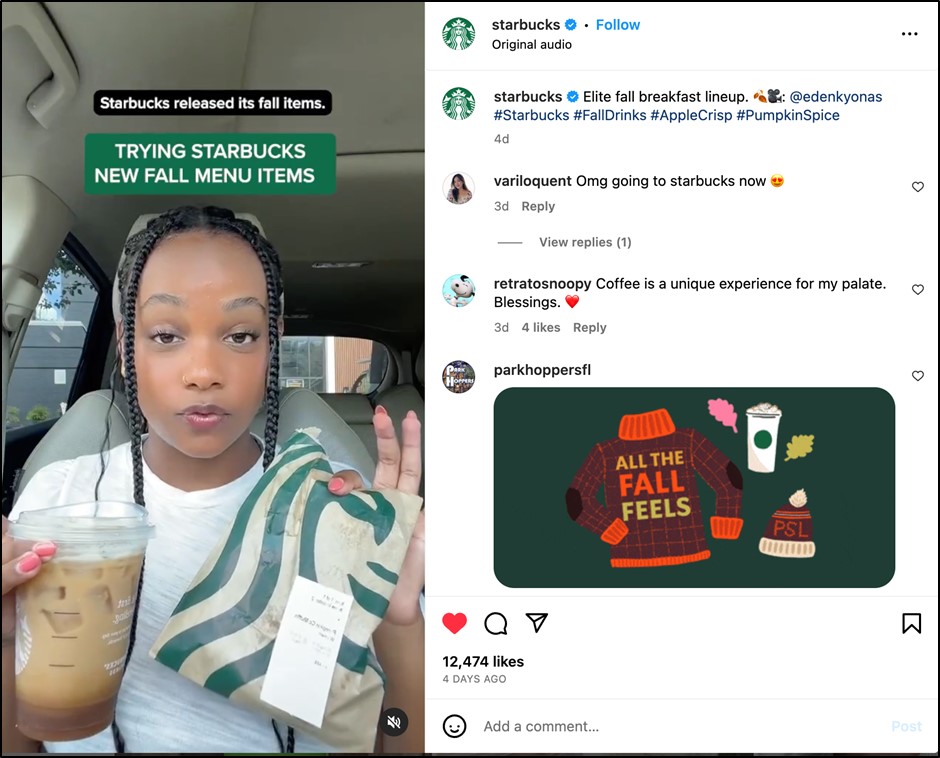
10. Optimize for mobile visitors
Business stage: Conversion
Mobile optimization is a top priority for all online businesses since most people access the internet using their mobile devices compared to desktops.
Something you need to consider here is that mobile optimization is more than a mobile responsive design. It means an end-to-end focus on how users interact with your website on their phones from the moment they discover your website to the moment they exit.
Here are 3 mobile optimization ideas beyond a responsive design:
• Make “Add to Cart” buttons more prominent on all mobile product pages.
• Make it easy for web visitors to see all important product information in one glance without scrolling.
• Compress product images and make them mobile-friendly.
11. Personalize your customer experiences
Business stage: Customer acquisition. Conversion, retention
Personalization cuts across all business stages and can be integrated into multiple channels.
Using demographic, geographic, and behavioral data, you can curate the experiences that your customers have and serve them personalized products, content, etc.
Personalization is simply acknowledging a customer’s preferences and making them feel special by meeting their preferences.
According to BCG, personalization can lift sales by as much as 10%, but the opportunity is greater than that. Only 15% of companies are using the technology to its fullest extent.

12. Create customer referral programs
Business stage: Customer acquisition and retention
As we mentioned earlier, customer retention is easier and more rewarding than customer acquisition. But what if you can do them both effectively using one strategy? Enter referral programs.
Nothing is more effective than a good referral program. It can help you keep your existing customers happy while acquiring new valuable customers.
A customer loyalty program keeps existing buyers interested and gives them a reason to purchase more. How many times have you made an order just because you got a discount upon making a referral?
And how many new customers has your favorite brand gained because you referred your friends? See, it’s a win-win for everybody.
According to Stitch Labs, return customers account for 22% of a retailer’s revenue while making up just 11% of the total customer base. They also spend 15% more over the course of a year.
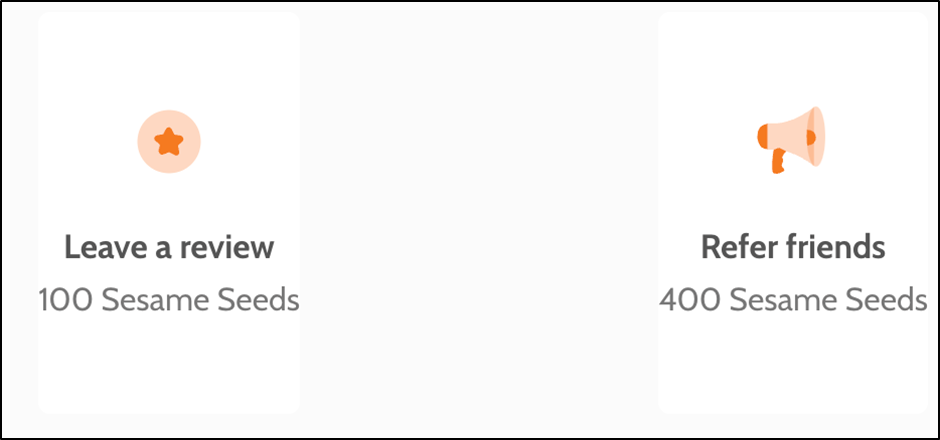
Conclusion

All of these strategies can be applied to achieve your business goals in a more intentional way. However, you don’t have to implement all of them at once. All businesses have a limited marketing budget, time, and human resources. Therefore, prioritize high-yielding strategies based on your goals and business stage.
Remember, just as a car engine requires careful maintenance and the right fuel, your marketing strategy is not cast in stone. It requires ongoing attention and adaptation to remain effective in the competitive e-commerce landscape.
If you enjoyed reading this piece, share it with a friend. And if you are looking for an agency to help you streamline your ecommerce business, look no further. We specialize in end-to-end marketing for ecommerce businesses and have expertise spanning different markets and marketing channels ready to be deployed. Talk to us today, and let us help you increase your revenue.






